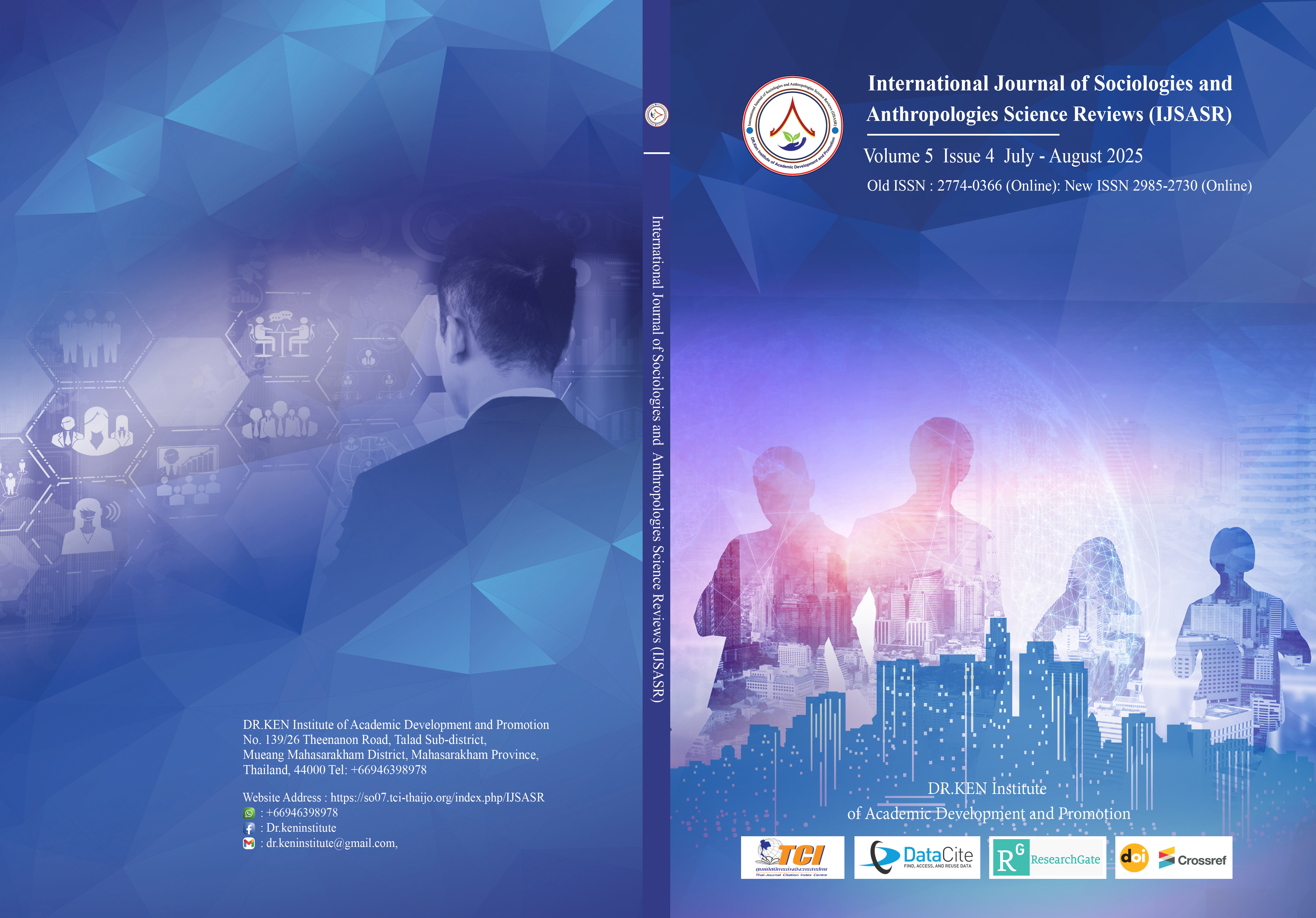Case Study on the Construction of Rural Brand Identity Based on Optimal Differentiation Theory: A Case Study of Zhaoshan Town, China
Main Article Content
Abstract
areas in cultural tourism development. Taking Zhaoshan Town as a case, it explores how Optimal Distinction Theory can be applied to construct a differentiated and sustainable rural brand identity.
Materials and Methods: Using a mixed-method approach combining literature review, field investigation, questionnaires, and structured interviews, the study analyzed perceptions of cultural symbols among tourists and locals. It systematically examined tensions between cultural inheritance and market adaptability in rural branding.
Results: Findings reveal significant cognitive gaps between internal and external stakeholders regarding core cultural symbols, leading to structural contradictions in brand development. The study proposes a "three-dimensional brand symbol architecture" model and dynamic symbol density calibration to balance cultural authenticity and market recognition.
Conclusion: The application of Optimal Distinction Theory provides a viable framework for resolving symbol alienation and homogenization in rural branding. The study offers theoretical and practical insights for constructing sustainable cultural tourism brands in rural revitalization contexts.
Article Details

This work is licensed under a Creative Commons Attribution-NonCommercial-NoDerivatives 4.0 International License.
Copyright on any article in the International Journal of Sociologies and Anthropologies Science Reviews is retained by the author(s) under the under the Creative Commons Attribution-NonCommercial-NoDerivatives 4.0 International License. Permission to use text, content, images, etc. of publication. Any user to read, download, copy, distribute, print, search, or link to the full texts of articles, crawl them for indexing, pass them as data to software, or use them for any other lawful purpose. But do not use it for commercial use or with the intent to benefit any business.

References
Acar, O. A., Dahl, D. W., Fuchs, C., & Schreier, M. (2021). The signal value of crowdfunded products. Journal of Marketing Research, 58(4), 644–661.
Barney, J. B. (2018). Why resource-based theory's model of profit appropriation must incorporate a stakeholder perspective. Strategic Management Journal, 39(13), 3305–3325.
Chen, G., & Chen, K. (2024). Research on the optimal differentiation management framework of teams based on spatio-temporal theory. Journal of Industrial Engineering and Engineering Management, 38(2), 35–50.
Chi, Z. (2025). Empowering rural industrial revitalization through brand building and constructing a new pattern of strong agricultural brands: A review of “Research on rural industrial revitalization from the perspective of brand strong agriculture.” Journal of Jiangxi Agricultural Sciences, 37(3), 134.
Deng, L. (2025, March 26). Skillful weaving of the “path to wealth” and blooming of “flowers of happiness” at the tips of fingers. Huaxing Times, 004.
Du, J., Zhao, W., Hao, X., et al. (2023). Organizational identity construction and optimal distinction under the background of strategic transformation: A multi-case study. Quarterly Journal of Management, 8(2), 83–103, 112.
Fan, X., Zhao, J., & Xu, W. (2025). Integrated development strategy of ecological agriculture and branding under the rural revitalization strategy. Shanxi Agricultural Economy, 6, 102–105.
Gao, H., Li, Q., Zhang, J., et al. (2024). Research on the entrepreneurial entry strategy of platform-dependent start-ups. Economic and Management Research, 45(1), 127–144.
Guo, C., Zhu, Y., Yu, Z., et al. (2024). How do internal entrepreneurial units of large enterprises stand out? Nankai Business Review, 27(8), 161–171, 184.
Guo, H., Li, Y., & Zhao, Y. (2020). Seeking common ground or preserving differences? Nankai Business Review, 23(6), 214–224.
Haans, R. (2019). What’s the value of being different when everyone is? Strategic Management Journal, 40(1), 3–27.
Huang, R., Spector, J. M., & Yang, J. (2017). Educational technology: A primer for the 21st century. Springer.
Huang, Y. (2025). Research on the cultivation of characteristic brands of art design professional groups. Journal of Taiyuan Urban Vocational College, 3, 11–13.
Ke, W., Wen, F., & Zuo, B. (2025). Dissonance has a “degree”: The threshold effect and psychological Ke, W., Wen, F., & Zuo, B. (2025). Dissonance has a “degree”: The threshold effect and psychological mechanism of distinctiveness. Acta Psychologica Sinica, 57(1), 1–18.
Kristal, S., Baumgarth, C., & Henseler, J. (2020). Performative corporate brand identity in industrial markets. Journal of Business Research, 114, 240–253.
Liang, H., Liu, J., & Liu, G. (2023). Uniqueness of crowdfunding projects and financing performance. Journal of Beijing Technology and Business University (Social Sciences Edition), 38(5), 125–142.
Luo, Y. (2025, March 20). Deepening the “Ganwei” brand. Longnan Daily, 001.
Shen, P. (2025). Empowering the digital transformation of ICH brands. China Business Review, 34(3), 91–94.
Tian, Q. (2025). Cultural revitalization through rural branding: A case study. Agricultural Economy, 3, 63–65.
Wan, C., & Ruan, D. (2025). ICH brands promoting digital villages. Modern Business Trade Industry, 7, 42–44.
Wang, Z., Zhou, X., Wang, Z., et al. (2025). Reconstruction of rural brand identity. Management World, 41(3), 93–113.
Xu, Y. (2025). County media fusion promoting rural IP innovation. All Media Exploration, 2, 109–111.
Yang, G., & Xu, H. (2025). E-commerce and national rural revitalization strategy. National Circulation Economy, (4), 32–35.
Yang, H. (2025). Golden and Green Leaders training model. New Countryside, 3, 51–52.
Zhang, Q., Li, Y., & Li, Y. (2025). Agricultural brand strategies. New West, 2, 118–123.
Zhang, Y., Liu, G., Yang, T., & Hou, Z. (2025). “Ecology-red-village history” trifecta brand research. Modern Business Trade Industry, 8, 31–33.
Zhou, X., Wu, G., & Sun, R. (2024). Internationalization of digital enterprises. Research & Development Management, 36(3), 16–32.
Zhu, L., & Wang, M. (2025). Brand image design based on brand genes. Journal of Pu'er University, 41(1), 42–50.
Zong, S. (2025). The party is building a brand through university assistance. China Brand and Anti-counterfeiting, 2, 188–190.






